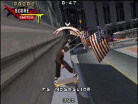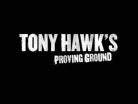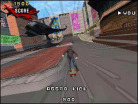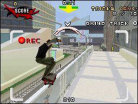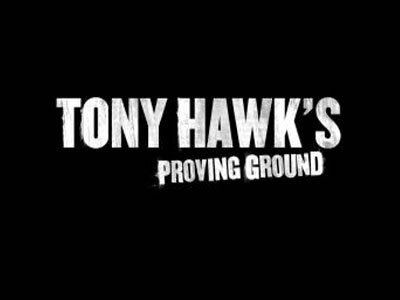- CLASSIC MAGAZINES
- REVIEW CREW
A show recapping what critics thought back
when classic games first came out! - NEXT GENERATION'S BEST & WORST
From the worst 1-star reviews to the best
5-stars can offer, this is Next Generation! - NINTENDO POWER (ARCHIVE)
Experience a variety of shows looking at the
often baffling history of Nintendo Power! - MAGAZINE RETROSPECTIVE
We're looking at the absolutely true history of
some of the most iconic game magazines ever! - SUPER PLAY'S TOP 600
The longest and most ambitious Super NES
countdown on the internet! - THEY SAID WHAT?
Debunking predictions and gossip found
in classic video game magazines! - NEXT GENERATION UNCOVERED
Cyril is back in this spin-off series, featuring the
cover critic review the art of Next Generation! - HARDCORE GAMER MAGAZING (PDF ISSUES)
Download all 36 issues of Hardcore Gamer
Magazine and relive the fun in PDF form!
- REVIEW CREW
- ELECTRONIC GAMING MONTHLY
- ELECTRONIC GAMING MONTHLY RANKS
From Mario to Sonic to Street Fighter, EGM
ranks classic game franchises and consoles! - ELECTRONIC GAMING MONTHLY BEST & WORST
Counting down EGM’s best and worst reviews
going year by year, from 1989 – 2009! - ELECTRONIC GAMING BEST & WORST AWARDS
11-part video series chronicling the ups and
downs of EGM’s Best & Worst Awards!
- ELECTRONIC GAMING MONTHLY RANKS
- GAME HISTORY
- GAME OVER: STORY BREAKDOWNS
Long-running series breaking down game
stories and analyzing their endings! - A BRIEF HISTORY OF GAMING w/ [NAME HERE]
Real history presented in a fun and pithy
format from a variety of game historians! - THE BLACK SHEEP
A series looking back at the black sheep
entries in popular game franchises! - INSTANT EXPERT
Everything you could possibly want to know
about a wide variety of gaming topics! - FREEZE FRAME
When something familiar happens in the games
industry, we're there to take a picture! - I'VE GOT YOUR NUMBER
Learn real video game history through a series
of number-themed episodes, starting at zero! - GREAT MOMENTS IN BAD ACTING
A joyous celebration of some of gaming's
absolute worst voice acting!
- GAME OVER: STORY BREAKDOWNS
- POPULAR SHOWS
- DG NEWS w/ LORNE RISELEY
Newsman Lorne Riseley hosts a regular
series looking at the hottest gaming news! - REVIEW REWIND
Cyril replays a game he reviewed 10+ years
ago to see if he got it right or wrong! - ON-RUNNING FEUDS
Defunct Games' longest-running show, with
editorials, observations and other fun oddities! - DEFUNCT GAMES QUIZ (ARCHIVE)
From online quizzes to game shows, we're
putting your video game knowledge to the test!- QUIZ: ONLINE PASS
Take a weekly quiz to see how well you know
the news and current gaming events! - QUIZ: KNOW THE GAME
One-on-one quiz show where contestants
find out if they actually know classic games! - QUIZ: THE LEADERBOARD
Can you guess the game based on the classic
review? Find out with The Leaderboard!
- QUIZ: ONLINE PASS
- DEFUNCT GAMES VS.
Cyril and the Defunct Games staff isn't afraid
to choose their favorite games and more! - CYRIL READS WORLDS OF POWER
Defunct Games recreates classic game
novelizations through the audio book format!
- DG NEWS w/ LORNE RISELEY
- COMEDY
- GAME EXPECTANCY
How long will your favorite hero live? We crunch
the numbers in this series about dying! - VIDEO GAME ADVICE
Famous game characters answer real personal
advice questions with a humorous slant! - FAKE GAMES: GUERILLA SCRAPBOOK
A long-running series about fake games and
the people who love them (covers included)! - WORST GAME EVER
A contest that attempts to create the worst
video game ever made, complete with covers! - LEVEL 1 STORIES
Literature based on the first stages of some
of your favorite classic video games! - THE COVER CRITIC
One of Defunct Games' earliest shows, Cover
Critic digs up some of the worst box art ever! - COMMERCIAL BREAK
Take a trip through some of the best and
worst video game advertisements of all time! - COMIC BOOK MODS
You've never seen comics like this before.
A curious mix of rewritten video game comics!
- GAME EXPECTANCY
- SERIES ARCHIVE
- NINTENDO SWITCH ONLINE ARCHIVE
A regularly-updated list of every Nintendo
Switch Online release, plus links to review! - PLAYSTATION PLUS CLASSIC ARCHIVE
A comprehensive list of every PlayStation
Plus classic release, including links! - RETRO-BIT PUBLISHING ARCHIVE
A regularly-updated list of every Retro-Bit
game released! - REVIEW MARATHONS w/ ADAM WALLACE
Join critic Adam Wallace as he takes us on a
classic review marathon with different themes!- DEFUNCT GAMES GOLF CLUB
Adam Wallace takes to the links to slice his way
through 72 classic golf game reviews! - 007 IN PIXELS
Adam Wallace takes on the world's greatest spy
as he reviews 15 weeks of James Bond games! - A SALUTE TO VAMPIRES
Adam Wallace is sinking his teeth into a series
covering Castlevania, BloodRayne and more! - CAPCOM'S CURSE
Adam Wallace is celebrating 13 days of Halloween
with a line-up of Capcom's scariest games! - THE FALL OF SUPERMAN
Adam Wallace is a man of steel for playing
some of the absolute worst Superman games! - THE 31 GAMES OF HALLOWEEN
Adam Wallace spends every day of October afraid
as he reviews some of the scariest games ever! - 12 WEEKS OF STAR TREK
Adam Wallace boldly goes where no critic has
gone before in this Star Trek marathon!
- DEFUNCT GAMES GOLF CLUB
- DAYS OF CHRISTMAS (ARCHIVE)
Annual holiday series with themed-episodes
that date all the way back to 2001!- 2015: 30 Ridiculous Retro Rumors
- 2014: 29 Magazines of Christmas
- 2013: 29 Questionable Power-Ups of Christmas
- 2012: 34 Theme Songs of Christmas
- 2011: 32 Game Endings of Christmas
- 2010: 31 Bonus Levels of Christmas
- 2009: 30 Genres of Christmas
- 2008: 29 Controls of Christmas
- 2007: 34 Cliches of Christmas
- 2006: 33 Consoles of Christmas
- 2005: 32 Articles of Christmas
- 2004: 31 Websites of Christmas
- 2003: 29 Issues of Christmas
- 2002: 28 Years of Christmas
- 2001: 33 Days of Christmas
- NINTENDO SWITCH ONLINE ARCHIVE
- REVIEW ARCHIVE
- FULL ARCHIVE
Tony Hawk's Proving Ground
If a few months ago you told me that my favorite version of Tony Hawk's Proving Ground was going to be the one released on the Nintendo DS, I would have thought you were going insane. With all of the new additions made to the next-generation consoles, it seemed unbelievable that most entertaining version would come out on an underpowered portable that can barely push Nintendo 64-era polygons. Boy was I wrong. While the Xbox 360 and PlayStation 3 versions of Tony Hawk's newest game strive to introduce new features and top last year's impressive entry, this Nintendo DS port goes back to the basics to offer a compelling skateboarding game that reminds me of why I fell in love with the series to begin with.
Proving Ground on the Nintendo DS is a traditional 3D Tony Hawk game, not some sort of weird Tony Hawk-meets-SSX variation we got last year in Tony Hawk's Downhill Jam. That said, Proving Ground feels exactly like all classic games in the series, you use the face buttons to link moves together and trick off of anything and everything in order to get a high score. All of the classic Tony Hawk moves are here, including the spine transfer, manuals, focus and so on. While this version does not have some of the newest moves that have been incorporated into the series (such as the "Nail a Trick" mode), I personally feel that this is a benefit as the recent console games are relying on this new move a bit too much for my taste.
Unlike the console versions of Tony Hawk's Proving Ground, this Nintendo DS game is not one large open world that you can explore at your convenience. Instead the game is split up into a number of smaller areas, each taking place in one of the East Coast-based cities that was found in the larger console game. The three cities in question are Philadelphia, Washington D.C. and Baltimore, each of which has their own unique look and feel. Oddly enough when done on the Nintendo DS these three cities don't seem nearly as dark and grimy as they did on the console. On the PlayStation 3 and Xbox 360 I felt depressed skating through these crime-ridden urban locales, but this Nintendo DS version feels lighter and more upbeat. Perhaps the Nintendo DS doesn't have the color pallet to recreate the dreary landscapes found in the console games (not that I'm complaining).
In each level you will run into a half dozen or so different people who will tell you a short story and give you a mission to complete. Like its console counterpart, Tony Hawk's Proving Ground DS features three difficulty levels for each task, so if you're just starting out you can feel that sense of accomplishment right from the very start. But don't fool yourself, some of the missions can be extremely challenging, even if you're going through and only beating the tasks on AM (amateur) mode. As you start to feel more confident in your abilities you can go back and try those missions over again in hopes of completing the PRO or SICK versions. Put all this together and you have a lot of gameplay, so expect to put a good amount of time into this game if you plan on beating it at 100%.
As you go through the challenges impressing the various skaters you eventually meet up with one of the pro skaters, who will teach you a new trick and give you a new challenge. Most of the challenges are nothing more than regular missions that are slightly more challenging, but it's fun to play these tasks because you know that when you beat them you'll be swept away to a brand new location (full of new missions and pro skaters). It's also fun to learn what the new moves are, especially since they can help you gain more points when completing future missions. Unfortunately not all of the new moves are as useful as others. For example, one of the biggest additions is the Gesture Trick, which is a mode that is completely touch-based. Here's how it works, when you are making a large jump you have to push the button in the middle of the lower screen. Once you've done that the game will slow down and you will be given a few specific tricks that you need to pull off, which are shown to you in the form of arrows. It's your job to draw those arrows on the screen to perform the trick, and then (hopefully) land your trick to gain the points. On paper this sounds like a lot of fun, but in practice it just feels unnecessary. The good news is that you won't have to do this very often, so you can pretty much ignore it for most of the game.
If you've played the console version of Proving Ground then the levels should look awfully familiar. As you progress through the game you will end up traveling to a lot of the places found in the console game, including downtown Philly, the harbor, a museum, the skate park, FDR and some of the famous Washington monuments. While the look and style of these levels are reminiscent of the PS3 and Xbox 360 game, the levels are just different enough to keep them interesting.
One of the more interesting aspects of Proving Ground is that you can affect how your character skates and the lessons he or she will learn. The game is split up into both hardcore and career tasks, the moves your character learns and the people they meet depends on which of these lifestyles you focus your attention on. While not as fully realized as it could have been, this game mechanic is a step in the right direction. The nice thing is that the rigging lifestyle (which is found in the console version) has been completely taken out of this game. While I liked the idea of rigging (which is to put down objects to help you score bigger combos), the way they added it to the game made it feel more like a chore than a fun experience. Having it out of the game allowed the developers to focus on what was fun about Tony Hawk ... and I'm here to tell you that skating is a lot more fun than building.
On top of having a lengthy story mode, Tony Hawk's Proving Ground also features a throwback to the good old days of the first four Tony Hawk's Pro Skater games. In the Classic Mode (which is completely separate from the story mode) you will be given two minutes to perform as many tasks as possible. In the true spirit of the original games, these tasks include meeting specific score goals, collecting special items, getting the C-O-M-B-O in one combo, collecting the SKATE letters and getting a high score and finding a hidden tape. Not only is this mode addictive, but it's also perfect for a portable game system. If you only have a few minutes to devote to a game then these two minute levels are perfect for your busy life. In fact, I would go one step farther and say that it's not just this classic mode that is easy to pick up and play, you can also get a lot out of the main story if you just play a few missions here and there.
When you're not dealing with the game's new main single-player modes, you can also check out the exciting online mode. Online this Nintendo DS tries to act like its bigger brother, most of the main multiplayer game types are accounted for in this stripped down version. You get classic game modes like H-O-R-S-E, score challenge, elimination and an endurance challenge. You will also find a couple of unique multiplayer modes, including a Red Light/Green Light challenge, where you can only score if the light is green (and if you try to score when the light is red you will actually lose points). This may not sound like much but it actually changes the dynamic of the overall game. It's exciting to be in the middle of a combo and be forced not to score until the light turns green; it certainly adds a challenge to the game.
The graphics in Proving Ground for the Nintendo DS are good, but it's hard not to notice how blocky all of the characters look. I suppose it's the limitations of the hardware, but it's a little jarring to go from the Xbox 360 version to this painfully retro looking Nintendo DS game. The levels hold up a little better, it's always easy to see what you can and cannot trick off of, and this game does looks significantly better than either Downhill Jam or American Sk8land. Still, this is hardly the best looking game on the Nintendo DS and it can take a few minutes to get over how different it looks from its console counterparts.
Thankfully the music is a little better. When I first turned on my Nintendo DS I was worried that I was going to have to listen to MIDI interpretations of popular Tony Hawk songs, but instead I was excited to find out that Activision managed to pack in a nice collection of real songs from big name artists. While the track line-up isn't as large as what we saw on the consoles, it's nice to see bands like Smashing Pumpkins, Nirvana, and Foo Fighters make the cut. The game does feature some spoken dialog, but it's generally only one or two lines and it usually doesn't get in the way of the audio. The skateboarding sounds are also good, but they are limited to only a few sounds instead of the vast library of sound effects found on the Xbox 360.
Of all the versions of Tony Hawk's Proving Ground I had to play this year, it's this Nintendo DS version that I would go back to time and time again. Overall the different missions in this game are more appealing than what I found on the Xbox 360, and between the story, classic and online modes, there's more than enough content here to keep me coming back for months to come. That's not to say that this game is perfect, but it's definitely nice to see a game that takes us back to the good old days of Tony Hawk; a time before we had to Nail a Trick or worry about skate checking. Fans of the Tony Hawk brand of skateboarding will be happy to know that this Nintendo DS port is not just a scaled down console game, it's easily the best version of the game on the market.
HOME |
CONTACT |
NOW HIRING |
WHAT IS DEFUNCT GAMES? |
NINTENDO SWITCH ONLINE |
RETRO-BIT PUBLISHING
Retro-Bit |
Switch Planet |
The Halcyon Show |
Same Name, Different Game |
Dragnix |
Press the Buttons
Game Zone Online | Hardcore Gamer | The Dreamcast Junkyard | Video Game Blogger
Dr Strife | Games For Lunch | Mondo Cool Cast | Boxed Pixels | Sega CD Universe | Gaming Trend
Game Zone Online | Hardcore Gamer | The Dreamcast Junkyard | Video Game Blogger
Dr Strife | Games For Lunch | Mondo Cool Cast | Boxed Pixels | Sega CD Universe | Gaming Trend
Copyright © 2001-2025 Defunct Games
All rights reserved. All trademarks are properties of their respective owners.
All rights reserved. All trademarks are properties of their respective owners.






